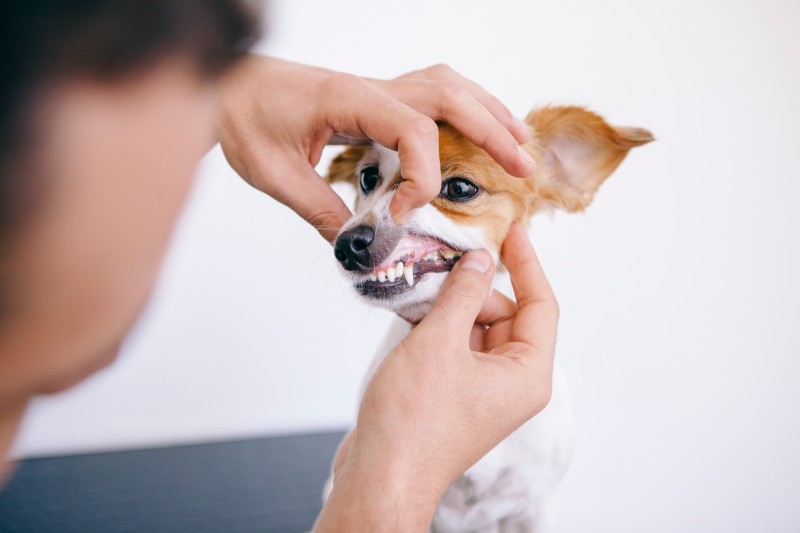The Four Stages of Pet Dental Disease
Pet dental disease, also known as periodontal disease, is a common but preventable condition in our pets. In fact, about 85% of pets have some form of the disease by the time they reach 4 years of age.
Regardless of the commonality of the disease, many pet parents aren’t aware that there is a problem. Aside from bad breath, there are few signs that are readily noticed until pet dental disease is advanced. And by this time, it’s not only painful for our pet, but it’s likely that they are experiencing bleeding gums, infection, tooth loss, and even damage to their internal organs caused by bacteria that find their way into the pet’s bloodstream.
The dental health of our patients is important to us at Sunrise Boulevard Animal Hospital, which is why we are focusing on this common but preventable problem, and what you can do to prevent and treat this serious condition.
What is Periodontal Disease?
Simply put, periodontal disease begins when bacteria in the mouth cause plaque and tartar to build up on the teeth. This bacteria then migrate under the gumline, causing inflammation (gingivitis). If left untreated, the bacteria then begin to destroy the supporting structures of the teeth, including the gums, root, and even the bone below.
Pain, infection, bone and tooth loss, and systemic damage can occur as a result of untreated periodontal disease.
The Four Stages of Pet Dental Disease
Pet dental disease can be broken down into four stages.
Stage 1 – this early stage is characterized by gingivitis, which is inflammation of the gums in response to the presence of bacteria and tartar. There may be swelling and redness of the gums.
Stage 2 – at this stage, also known as early periodontitis, is characterized by a small amount (25% or less) of bone loss visible on oral radiographs. You may notice bad breath and visible plaque and tartar in addition to red gums. At this point, your pet will need a professional dental cleaning in order to remove plaque and tartar under the gum line and halt the onset of periodontal disease.
Stage 3 – serious dental damage begins to occur at stage 3, also known as moderate periodontitis. 25% – 50% bone loss will be evident on oral radiographs. Gums will be red and swollen, bleed easily, and there will be a loss of gum attachment to the teeth causing what’s known as deep pockets. Your pet may be in significant pain and need to have problem teeth removed.
Stage 4 – at this final and severe stage of periodontitis, over 50% bone loss has occurred as seen on oral radiographs. Your pet is not only at risk for severe pain and tooth loss, but also systemic infection and organ damage as a result of bacteria that enter the bloodstream from infection in the mouth.
Preventing and Treating Pet Dental Disease
The first step in preventing and treating pet dental disease is regular oral examinations with a veterinarian. At Sunrise Boulevard Animal Hospital this occurs as part of your pet’s annual wellness visit. A thorough look in the mouth coupled with your account of your pet’s behavior at home will help our veterinarians develop a plan for your pet’s oral care.
Most pets require regular professional dental cleanings under general anesthesia to ensure the health of their teeth and gums, as well as to correct any problems caused by periodontal disease.
Regular teeth brushing at home is also an important component of your pet’s ongoing oral health. Although it’s true that – like children – pets have an easier time when started as puppies and kittens, older animals can also learn to tolerate and even enjoy this daily attention. Daily tooth brushing, regular oral checkups, and professional dental cleanings will help your pet live a happy and healthy life.
If you have any questions about pet dental disease or would like to schedule an appointment for your pet’s oral examination please don’t hesitate to give us a call. As always, your team at Sunrise Boulevard Animal Hospital is here for your and your pet.

